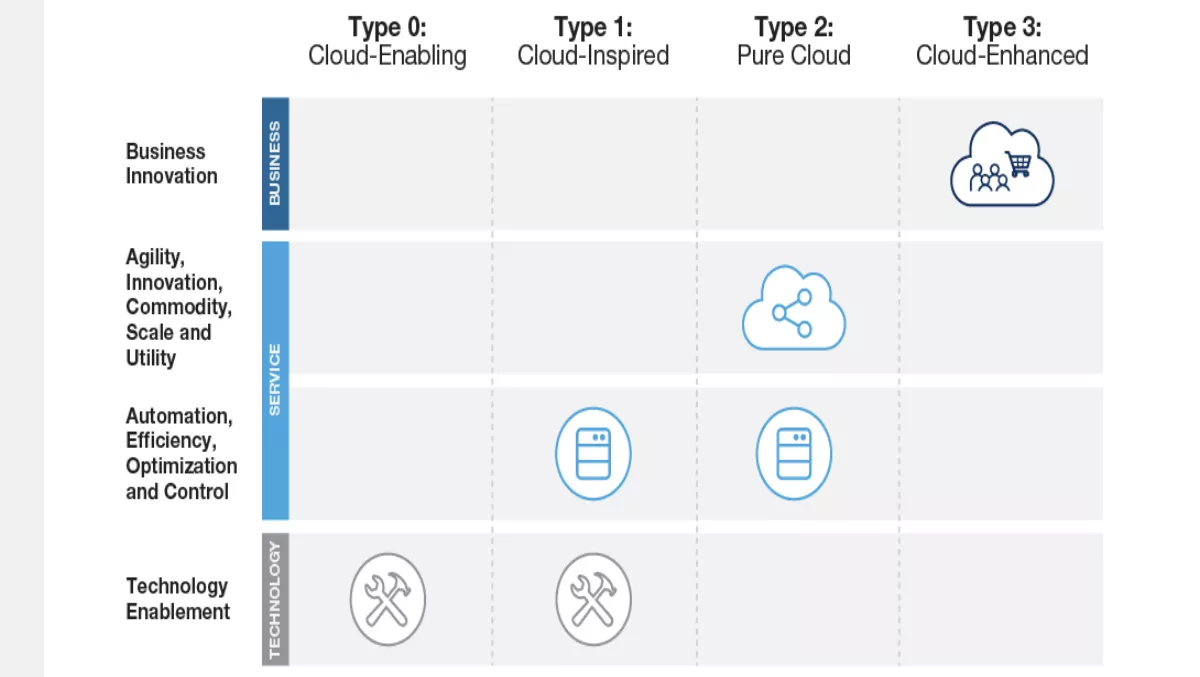
Breaking down cloud computing and its nuances - Gartner
You're the CIO of a large manufacturing company.
One of the IT goals for 2017 is to shift processes and programs to the cloud.
You've decided that the public cloud is a good option, eliminating the need for an internal private cloud build.
However, have you and the team considered what mix of cloud and cloud-related capabilities will work for the specific goals of the enterprise?
There is a persistent idea in the IT world — and other business units — that cloud equals 'good'.
But enterprises must be more deliberate in deciding if the technology that will allow for the best results is pure cloud.
Part of the problem is that the term 'cloud' has been used to encompass a wide variety of technology.
In fact, Gartner predicts that by 2019, 'cloud' will be a ubiquitous term like 'network' as business solutions assume use of public cloud as a common asset.
"Cloud computing represents one of the most misunderstood, yet valuable, innovations in current IT and business strategies," says Gartner vice president Daryl Plummer.
"However, the value of cloud computing is reduced by the inability of many end-user organisations and managed service cloud providers to sort through technology provider cloud options to find the correct mix of cloud and cloud-related capabilities that they need," he adds.
"Misaligned expectations will cause many cloud projects to fail.
The cloud spectrum
Cloud and cloud-related offerings range from cloud-enabling technologies to pure cloud choices.
CIOs should consider the spectrum of cloud capabilities to support their intended value propositions.
Type 0: Cloud-Enabling
Cloud-enabling is not cloud computing; however, it does include the technologies that allow customers to adopt cloud models.
This includes technologies such as visualisation software, physical servers, WAN networks and data center colocation.
These technologies support companies that wish to build a private cloud, and form the building blocks via necessary architecture and physical setup.
They should be used to make cloud delivery more reliable, efficient or agile.
Type 1: Cloud-Inspired
These technologies are closer on the spectrum to a true cloud model, but lack several key pure cloud attributes such as cloud APIs and usage-based pricing.
The goal for these technologies is not purity, but rather maximum levels of consumer control and specific hosting desires.
Companies that select these technologies are less concerned with the benefits of pure cloud and more concerned with a higher degree of customisation and control while attaining some level of virtualisation, standardisation, and automation.
They do not provide for true hyperscale, full self-service, ultra-rapid provisioning, or provider variety and speed of innovation.
Type 2: Pure Cloud
Pure cloud options are generally, though not always, delivered in the public cloud over the private.
Pure cloud includes examples such as Amazon Web Services, Salesforce, Google App Engine and Microsoft Azure.
Pure cloud enables innovation brought about by continuous delivery of new service capabilities, and if the business goal is maximum agility, pure cloud options are a good fit.
This area of cloud offerings is growing rapidly — although the bulk of IT remains in cloud-inspired — as many enterprises move from 'cloud maybe' to 'cloud first'.
Type 3: Cloud-Enhanced
These are cloud offerings built on top of pure public cloud computing.
This type of offering assumes that public cloud computing already exists and builds on top of it to capture value from cloud services.
Examples include streaming video services, machine learning platforms, security as a service and GE's Predix platform, the 'social network for machines'.
This area is focused on providers generating new business growth in cloud-enhanced areas rather than traditional cloud areas.
The goal is to discover how enterprises can uniquely benefit from public cloud computing.
Article written by Gartner brand content manager Kasey Panetta

